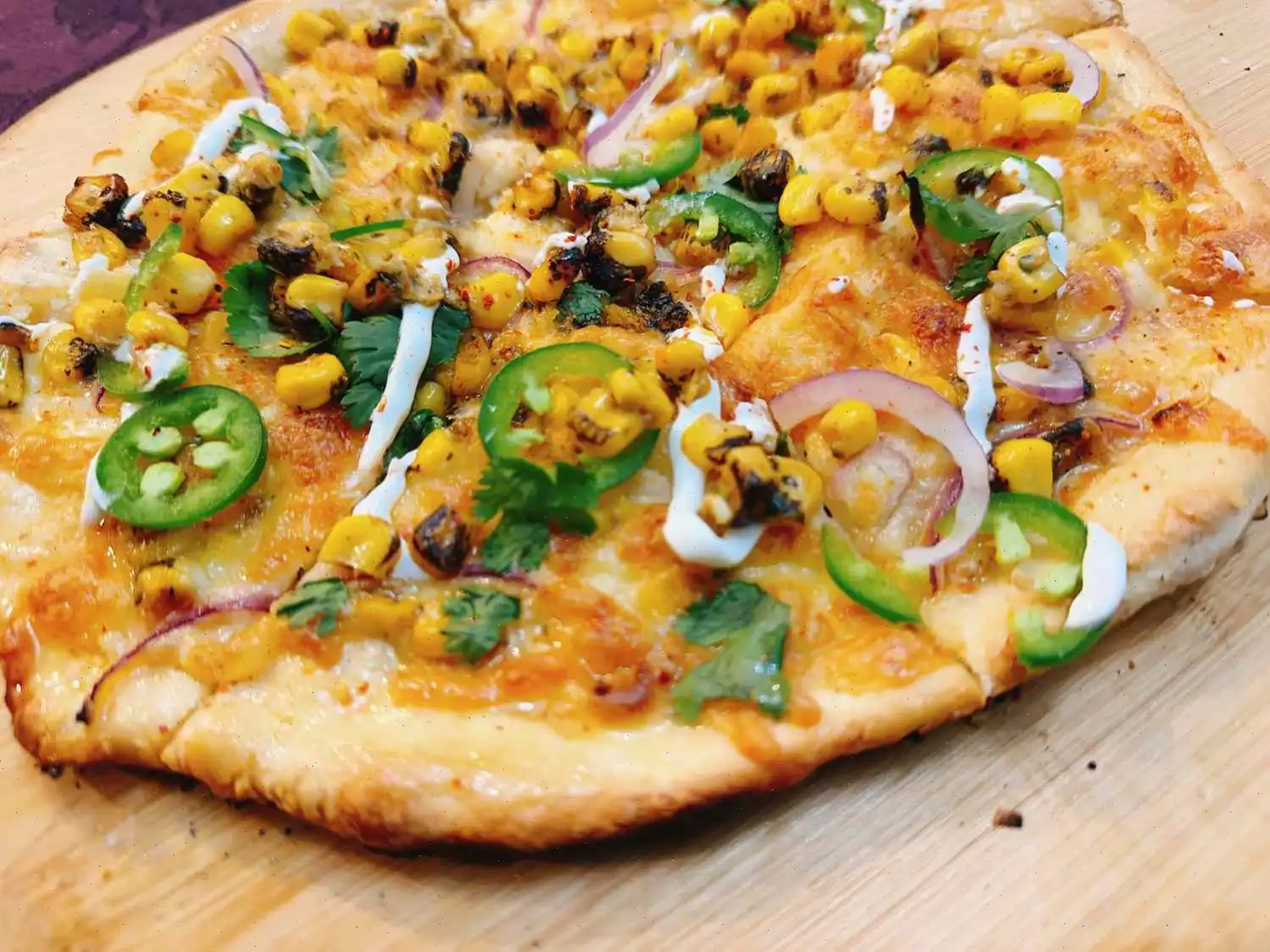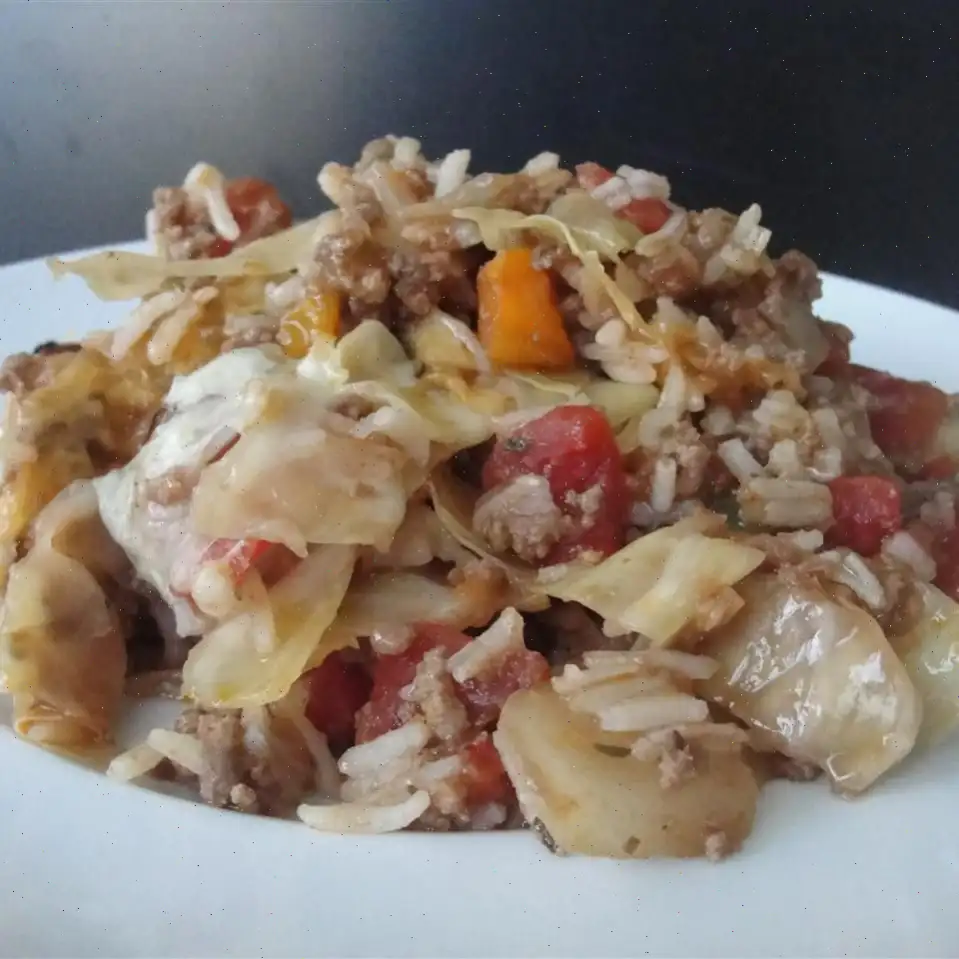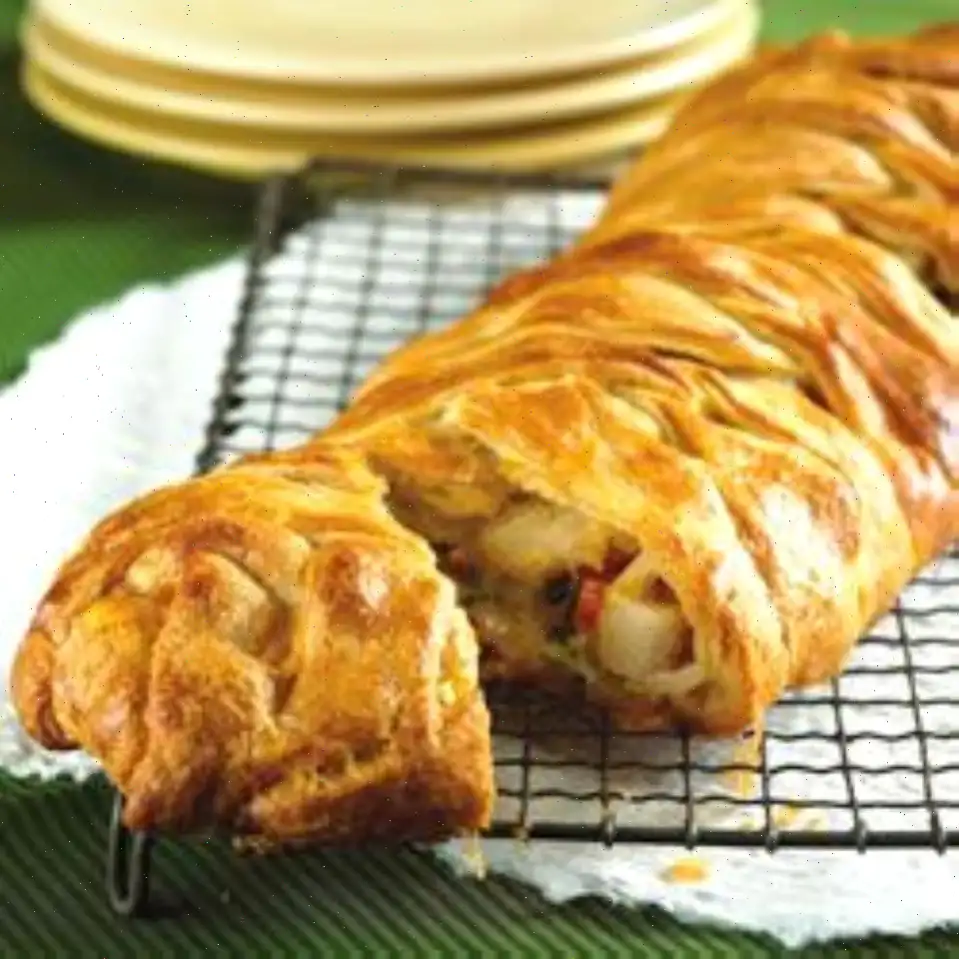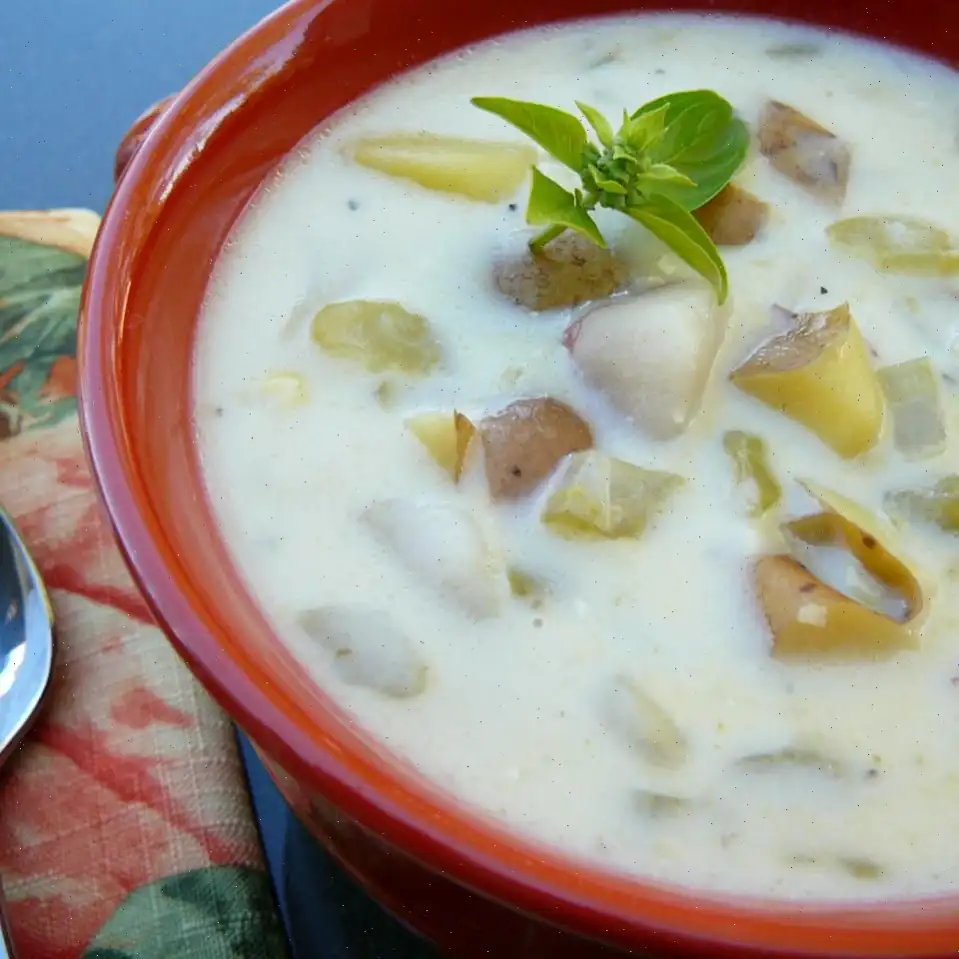
Chef John's Beef Rouladen
Ingredients
- 2 (6 ounce) (1/4 inch thick) slices of beef round
- 2 teaspoons kosher salt
- 1 teaspoon freshly ground black pepper
- 2 tablespoons Dijon mustard
- 4 strips bacon
- Paprika, or to taste
- onion, sliced into half-rings and separated
- 6 dill pickle spears
- 1 tablespoon vegetable oil
- Gravy:
- 2 tablespoons butter
- cup all-purpose flour
- 3 cups beef broth
- Salt to taste
Directions
- Place the beef slices on a clean work surface. Season both sides with kosher salt and freshly ground black pepper. Spread Dijon mustard evenly on one side of each beef slice.
- Place a strip of bacon on top of the mustard and sprinkle with paprika. Arrange onion slices crosswise on the beef, and then evenly place 3 pickle slices across each slice of beef. Make sure to leave about an inch of the narrowest end of the beef slice free of toppings to help with the rolling process.
- Carefully roll each slice of beef starting from the wider end. Keep all the ingredients tightly inside the roll. Secure each roll with 3 loops of butcher's twine (one in the middle and one at each end). Trim any excess twine.
- Heat vegetable oil in a large saucepan over medium-high heat. Brown the beef rolls on all sides, about 8 minutes. Remove the rolls from the pan and set aside.
- Reduce the heat to medium-low. In the same pan, melt butter. Whisk in the flour and cook for about 1 minute to make a roux.
- Slowly add the cold beef broth while whisking continuously to combine. Raise the heat to medium-high and simmer the sauce for about 1 minute, or until it begins to thicken.
- Return the beef rolls to the pan, along with any accumulated juices. Reduce the heat to very low and cover the pan. Simmer gently, turning the rolls every 20 minutes or so, for about 1 hours, until the beef is tender and easily pierced with a sharp knife.
- Once the beef is tender, transfer the rolls to a dish and let them rest. Increase the heat to high and bring the cooking liquid to a simmer for 1 minute to slightly thicken the gravy.
- Serve the beef rouladen with the gravy poured over the top. Enjoy!
Nutrition Facts (per serving)
- Calories: 641
- Total Fat: 39g (50% Daily Value)
- Saturated Fat: 16g (79% Daily Value)
- Cholesterol: 141mg (47% Daily Value)
- Sodium: 5266mg (229% Daily Value)
- Total Carbohydrates: 23g (8% Daily Value)
- Dietary Fiber: 3g (9% Daily Value)
- Total Sugars: 2g
- Protein: 48g (96% Daily Value)
- Vitamin C: 4mg (5% Daily Value)
- Calcium: 55mg (4% Daily Value)
- Iron: 6mg (32% Daily Value)
- Potassium: 808mg (17% Daily Value)
* Percent Daily Values are based on a 2,000 calorie diet. Your daily values may vary depending on your calorie needs.

Origin and History of Beef Rouladen
Beef Rouladen is a traditional German dish with roots that trace back to the 19th century. It is a classic comfort food in Germany, especially in the regions of Swabia and Bavaria. The dish is believed to have been inspired by the French "rti en crapaudine," which involves rolling meat with various fillings and cooking it slowly. Over time, the German version incorporated local ingredients like bacon, pickles, and mustard, becoming the beloved Rouladen that is now a staple of German cuisine. Historically, it was often served during festive occasions or as a hearty family meal. The dish represents a perfect example of "economical luxury," using affordable cuts of meat that, when cooked slowly, become tender and flavorful.
Regional Variations
While Beef Rouladen is considered a German national dish, different regions have their own variations. In Bavaria, the rouladen may be filled with pickles, onions, and mustard, while in other areas, a blend of spices, carrots, or even gingersnaps can be added to the stuffing or gravy. The method of cooking can also differ; some prefer to braise the rouladen in a rich wine-based gravy, while others use a simple beef broth. Despite these regional differences, the core ingredientsbeef, bacon, onions, and picklesremain a constant, unifying the dish across the country.
Differences from Similar Dishes
Beef Rouladen might remind you of other stuffed meat dishes, like the Italian involtini or the French rouleaux. However, what sets it apart is its specific combination of fillings and cooking method. Unlike Italian involtini, which often use thin slices of veal or pork and a variety of cheeses and herbs, Beef Rouladen focuses on the savory combination of mustard, pickles, onions, and bacon. Additionally, while French roulades might be roasted or grilled, German rouladen is usually braised, resulting in a tender, melt-in-your-mouth texture. The use of pickles in rouladen is a distinctive feature, offering a sour contrast to the rich, meaty filling.
Where is Beef Rouladen Typically Served?
Beef Rouladen is commonly served in traditional German homes and restaurants, especially in the winter months. It is a perfect dish for family gatherings and special celebrations like Christmas or New Year's Eve. The dish is often accompanied by sides such as mashed potatoes, red cabbage, or spaetzle, and a rich gravy made from the cooking juices. In Germany, its also a popular choice at festive events like Oktoberfest. Outside of Germany, many European countries with a strong German influence, such as Austria and Switzerland, have adopted their own versions of Rouladen, often making it a go-to dish for large family meals.
Interesting Facts about Beef Rouladen
- Beef Rouladen was originally created as a way to make tough cuts of meat more tender and flavorful by braising them for a long period of time.
- In some parts of Germany, Rouladen is served with "Rotkohl" (red cabbage) and "Kartoffelkle" (potato dumplings) to complete the meal.
- According to some traditions, the rouladen is tied with string or secured with toothpicks, but butcher's twine is the most common method used today.
- In Austria, a similar dish known as "Fleischstrudel" is made by rolling the meat with similar fillings, but it often uses a puff pastry crust.
- There is a German proverb that says, "A woman who can cook a perfect rouladen is worth her weight in gold." This speaks to the cultural importance of this dish in Germany.
Whether youre cooking for a special occasion or just craving a hearty meal, Chef John's Beef Rouladen recipe offers a perfect combination of flavors that showcase the essence of German cuisine. Enjoy the comforting and savory flavors of this iconic dish that has been cherished for generations.
FAQ about Chef John's Beef Rouladen
Comments
Laura Perez
08/15/2022 11:14:05 PM
Excellent Rouladen recipe! I decided to make a double batch and used Better Than Bouillon for added flavor. I cooked the bacon first, making sure not to let it get crispy. I prefer my gravy a bit thinner, so I used less flour. I cooked it for 2 hours in an electric skillet on a low simmer, turning it every 20 minutes. A word of caution: avoid adding salt as it's easy to oversalt the Rouladen.
Larry Flores
07/05/2023 04:31:48 AM
This recipe is very similar to the one my German mother-in-law used to make. The only difference is that she would sprinkle some flour on a board, then tenderize the meat on the flour, flip it over, tenderize the other side, and then add the fillings. The meat naturally created its own gravy with the flour, making it easier to roll up. She would secure it with a few toothpicks and have the butcher slice a juicy rump roast into 1/4 inch pieces for her.
Thomas Young
05/29/2023 02:03:43 AM
Impressive and delicious recipe! I made a few additions: I added 1 cup of red wine and omitted 1 cup of water, using "Better Than Bouillon" beef base to make the gravy. I also included 1 pickle spear per meat slice (1 large pickle quartered), chopped onions, and 1 bay leaf.
Raymond Young
11/27/2022 02:17:25 AM
I absolutely adored preparing this recipe! It transported me back to Bavaria in 1989, when my host mother originally taught me how to make Rouladen! While she used sewing thread to tie hers, I prefer the reliable method of toothpicks, which has yet to disappoint! Chef John is hands down my favorite chef to follow and learn from online!








